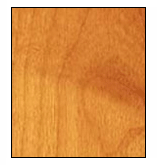
Alder - Red
Red Alder is a good utility furniture wood. Exposed parts stain to blend with walnut, mahogany, or cherry veneers. Highly prized for upholstery framing because of its stability and superior tack holding capability.
Characteristics:
Lightweight for a hardwood but very fine texture with relatively good impact resistance. Tree deciduous, wood diffuse porous, contrast in spring and summer wood not apparent. Heartwood pale roseate, luster low, sapwood lighter.
Common Uses:
Bedroom suites, cabinetmaking, candlesticks, chairs, chests, desks, dining-room, furniture Dowell pins, Dowells drawer sides, fine furniture, Floor lamps, hatracks, interior trim kitchen, living-room suites, Millwork office furniture: radio, stereo, TV cabinets, rustic furniture stools, tables, umbrella handles, and veneer wainscotting wardrobes. Widely used for woodworking, e.g., feast bowls, masks, rattles, canoe bailers & paddles. Fuel wood for smoking salmon & other fish.
Working Properties:
Fine machining and finishing characteristics, stains easily to blend with more expensive woods. The material is reported to turn very well, despite its softness. It has been compared to Black cherry (Prunus serotina ) in this regard. (Percent of pieces with fair to excellent results in turning = 88).
Common Name:
Alder, Oregon Alder, Pacific Coast Alder, Red Alder, and Western Alder
Tree is Native To:
Oregon and Washington
Botanical Classification:
Alnus rubra
Family:
Birch (Betulaceae)
Average Dried Weight:
29 to 31 pounds per cubic foot
Average Specific Gravity:
0.37
Color:
The heartwood, which is indistinct from the sapwood is whitish when first cut, but changes color upon exposure to light reddish-brown.
Density:
Medium
Texture:
Texture is typically fine and even, and is close.
Grain:
Red alder has been described as 'pleasing' in appearance, with grain that is typically straight and subdued. Although the color has often been described as delicate, the wood is without any outstanding figure.
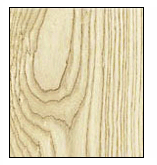
Ash
American Ash Fraxinus americana is a strong but flexible wood thats unique properties led to its use in sporting equipment and tool handles. Ash has recently increased in popularity as a substitute for white oak in furniture construction and flooring. Main commercial hardwood species in US. Hard, strong, flexible wood is bendable and shock resistant.
Characteristics:
Ash is a domestic hardwood. This wood is strong and stiff, has good shock resistance and is noted for its excellent bending qualities. It is ring-porous with a distinct figure. It has a coarse and generally straight grain with an almost white sapwood and pale brown heartwood.
Common Uses:
Ash is great for flooring and moulding. It is also used for bats - cues - oars - handles - bent parts for boat building - plywood - furniture - veneer - joinery and paneling.
Working Properties:
Ash works well with hand and machine tools. It can also be brought to a fine surface finish. It glues well. Pre-boring is necessary when nailing and screwing.
Common Name:
Ash - American (White Ash), Biltmore Ash, Biltmore White Ash, Fresno, White Ash.
Tree is Native To:
Ash is found throughout eastern Canada and most parts of the United States east of the Rocky Mountains.
Botanical Classification:
Fraxinus americana
Family:
Oleaceae
Average Dried Weight:
41 lb/ft.
Average Specific Gravity:
.66
Color:
The narrow sapwood is nearly white in color. The heartwood is pale brown, grayish brown, light brown, or pale yellow streaked with brown. The color may also be cream to very light brown, occasionally with a reddish tinge.
Density:
Weight varies as follows: F.americana 41 Ib, F.pennsylvania 43 Ib, and F.exclesior 36 Ib.
Texture:
Normally coarse-textured
Grain:
Bold, straight, moderately open with an occasional wavy pattern. Plainsawn boards usually have strong contrast in grain.
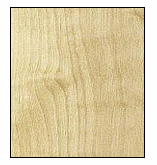
Birch (yellow)
Birch is especially popular for furniture, fixtures, fine cabinets, flooring, doors, and interior trim. Birch is also one of the most popular of the decorative woods available in plywood form. Birch veneer is used extensively in cabinets and furniture.
Characteristics:
Bark is silver-yellow in color. Prefers cool, moist habitat. Yellow Birch is a domestic hardwood. There is a wide range of color differences in Yellow Birch. (This Birch can be selected for white pieces) The diffuse-porous heartwood is light to dark golden-brown to light reddish brown. The sapwood is whitish, pale yellow or light reddish brown. This hard lumber is strong and very often wavy or curly. It is a closed grain wood of even texture.
Common Uses:
Furniture - joinery - flooring - doors - cabinetry - veneers and plywood.
Working Properties:
Yellow Birch works easily with sharp hand or machine tools. Pre-boring is a must for screwing or nailing. It glues well and takes stains and polish extremely well. Birch also bends well.
Common Name:
Yellow Birch, Sweet birch (B. lenta), (B. alleghaniensis), American birch, Birch Gray, Birch Silver, Birch, Swamp Birch
Tree is Native To:
Birch grows from the southwest corner of Manitoba to and throughout Canada's Atlantic provinces and the northeast United States as far as North Carolina..
Botanical Classification:
Betula alleghaniehsis
Family:
Betulaceae
Average Dried Weight:
44 lb/ft.
Average Specific Gravity:
0.55 to 0.60
Color:
The sapwood is described as whitish, pale yellow, or light reddish brown. Heartwood Color The heartwood is light to dark brown or reddish brown.
Density:
Heavy
Texture:
Fine and even
Grain:
The grain is reported to be typically straight, but some logs may contain wavy or curly grain.
Birch is described as one of the most featureless of all North American hardwoods, but it has a natural pleasing figure which makes it very attractive for furniture. Annual rings, grain and pores are often indistinct, and a uniform scattering of fine pores or vessels throughout the material gives it a dull and lusterless appearance.
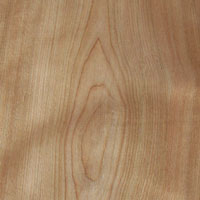
Red Birch (Sweet Birch)
Characteristics: Red Birch is a domestic hardwood. The wood has a light colored sapwood and the beautiful heartwood is dark brown tinged with red. This diffuse-porous wood is hard and strong. The texture is fine and uniformed. Like Yellow Birch, there is often a wavy or curly figure present.
Common Uses: Furniture - veneers - cabinetry - joinery - flooring - doors - butcher blocks and birch beer.
Working Properties: Red Birch has very good machining, gluing and finishing qualities. You must pre-bore when screwing or nailing. Red Birch has the same qualities as Yellow Birch.
Common Name: Red Birch (Sweet Birch)
Tree is Native To: Red Birch grows in the Adirondack, in the eastern Appalachian area and as far south as the northern gulf states.
Botanical Classification: Betula lenta
Family: Betolaceae
Average Dried Weight: 46 lb/ft.
Average Specific Gravity: .65
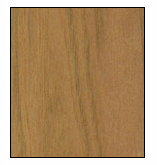
Butternut
Butternut is better known for its edible nuts rather than its lumber. The tree is of sparse occurence from southern New Brunswick and Maine through the upper peninsula of Michigan then southward into northern Arkansas. Occasionally some butternut is found in the mountain areas of Alabama and Georgia. Butternut is scarce, with the supply diminishing rapidly. Its widely branched crown is weak and susceptible to breakage by storms or heavy loads of snow, exposing it to the attacks of insects and fungus diseases and making this a short lived species.
Characteristics:
A true member of the walnut family, butternut is sometimes called white walnut because of its resemblance to black walnut, though it is much softer and lighter in color. A good cabinet wood, although too weak for some purposes. Has been used for interior trim, boat trim, and interior cabinets. In some situations, it is more desirable for wall paneling than black walnut due to the lighter, more cheerful color. Tree is deciduous; wood ring porous. Butternut has little or no resistance to decay and is reported to be susceptible to attack by the furniture beetle. The wood is also reported to rate lower than Black walnut in decay resistance. The growing tree is reported to be easily attacked by insects and fungus before maturity.
Common Uses:
Cabinetmaking Furniture, Instrument cases, Interior trim, Joinery, Millwork, Woodenware, Bedroom suites, Chairs, Chests, Desks, Dining-room furniture, Dowell pins, Dowells, Drawer sides, Floor lamps, Hatracks, Kitchen cabinets, Living-room suites, Moldings Radio, stereo, TV cabinets Rustic furniture, Stools, Tables, Wainscotting, & Wardrobes
Working Properties:
Easy to work; machines, turns and sands well. Little resistance to cutting, but cutters should be kept sharp to avoid tearing the soft wood. It glues well. It accepts stains well and can be polished to a fine finish.
Common Name:
Butternut White, Walnut Oilnut, Nogal, Nogal Blanco, Nogal Silvestre, Nuez Meca, Tocte, Tropical walnut, & White Walnut
Tree is Native To:
North America and Canada
Botanical Classification:
Juglans cinerea
Family:
Juglans nigra
Average Dried Weight:
28lb
Average Specific Gravity:
0.36
Color:
Heartwood light brown or fawn, sapwood lighter
Density:
Soft and weak
Texture:
Coarse, but wood polishes to high luster
Grain:
The grain, which is usually straight, has also been described as satiny and leafy. Some veneer flitches may exhibit small dark spots.
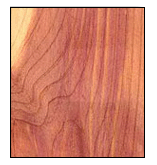
Aromatic Cedar (Eastern Red)
The wood we know as red cedar, aromatic cedar, etc., is really not a cedar at all. It is a Juniper, belonging to the true cypress family which does not actually include the wood we call cypress. Red cedar is cut from small timber, mostly second growth. The lumber is therefore very knotty, contains a great deal of the white sapwood, and is of small width and length average. Clear lumber, all red heartwood and wide widths are not obtainable in this specie.
Characteristics:
Aromatic Cedar is a domestic hardwood. The heartwood is a reddish brown to dull brown to purple. The sapwood is nearly white and it is narrow. The grain is generally straight but has a coarse and uniformed texture. This lumber is light, moderately soft, low in strength and the heartwood is very resistant to decay. The wood is highly aromatic and often has many small knots.
Common Uses:
This wood is used in boats - boxes - chest linings - souvenir novelties - posts - poles and the oil is distilled from the wood to make perfume.
Working Properties:
Aromatic Cedar has very good working qualities with any hand or power tools. Great carving properties and takes a finish well. Shapes and carves exceptionally well, but it is brittle and splits easily when nails are driven close to the end of the board. Strong cedar scent. Its volatile extractives may prevent some finishes from curing.
Common Name:
Aromatic Cedar (Eastern Red)
Tree is Native To:
Grows in the Eastern half of North America from Maine, Nova Scotia, New Brunswick, Southern Quebec and Ontario to Eastern Texas and Northern Florida.
Botanical Classification:
Juniperus virginiana
Family:
Cupressaceae
Average Dried Weight:
33 lb/ft.
Average Specific Gravity:
.44
Color:
Heartwood red, sapwood white.
Density:
Moderately hard
Texture:
Fine
Grain:
Tree is evergreen, wood non-porous, close grained and durable
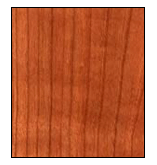
Cherry
Cherry is a premier American moulding & cabinet wood which used to rank second to Walnut, but has been outselling Walnut for the past 3-4 years.
Moderately heavy, hard and strong, machines and sands to glass-like smoothness, tree is deciduous; wood diffuse porous and close-grained, annual growth visible but not pronounced, with exceptional stability. Cherry hardwood is sensitive to light and the color naturally deepens as it ages. Although a perfect match cannot be guaranteed with any addition of new moulding or cabinets, deepening of color will occur on the new moulding or cabinets within 12 - 24 months with continued exposure to Ultra violet lighting.
Characteristics:
Cherry is a domestic hardwood. The heartwood is a medium red-brown with it's own characteristic luster. The sapwood is narrow and nearly white. The grain is straight, finely textured and close with usually a gentle waving figure. Cherry has a uniform texture, is medium heavy, strong, stiff and moderately hard. Cherry is one of the most sought after hardwoods. Cherry turns darker as it ages.
Common Uses:
Fine furniture - flooring - moulding - cabinet making - turnery - joinery - carving - musical instruments - veneers and plywood.
Working Properties:
Cherry works well, saws cleanly, planes excellently and takes all kinds of finishes very well. Screw holding properties are good and so are it's gluing.
Common Name:
Cherry
Tree is Native To:
Cherry generally grows through the eastern part of the United States, Canada & Switzerland. Most trees are located in the Appalachian Mountains in New York, Pennsylvania and West Virginia.
Botanical Classification:
Pronus serotina
Family:
Rosaceae
Average Dried Weight:
36 lb/ft.
Average Specific Gravity:
.58
Color:
Heartwood reddish-brown, sometimes with greenish cast; sapwood yellowish-white.
Density:
Medium heavy
Texture:
Texture is fine and uniform, and the wood often has narrow brown pith flecks and small gum pockets.
Grain:
The grain is reported to be fine, but material with dark wavy streaks which are described as striking in appearance are frequently found. Quartersawn pieces are reported to be very beautiful.
Cherry is reported to have a strong resemblance to true Mahogany, and is often called New England mahogany.
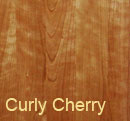
Curly Cherry
Botanical Name: Prunus spp. of the family Rosaceae
Prunus is a genus of 120 to 400 species that contain fruitwoods like cherry, plum and almond. The species are native to North America, Asia, Europe and the Mediterranean region. All species look alike microscopically. The word prunus is the classical Latin name for the cherry tree.
American black cherry is Prunus serotina
European Cherry is Prunus avium
Common Names: American cherry, capulin, black cherry, black wild cherry, cabinet cherry, chisos wild cherry, capollin, capuli, capulin, cerezo, detze, Edwards Plateau cherry, escarpment cherry, ghoto, gila chokecherry, mountain black cherry, muji, plum, rum cherry, southwest choke cherry, southwestern chokecherry, tnunday, wild black cherry, wild cherry, whisky cherry, New England mahogany, xeugua European cherry is also known as cerisier, English cherry, gean, mazzard, mazzard, merisier, meurisier, and kers
Type: hardwood
Color: The sapwood may be light yellow or white or pinkish and is a fairly narrow band around the heartwood. The heartwood is salmon pink to brownish, sometimes with a greenish tinge, darkening upon exposure to a deep reddish brown with a golden luster. Cherry's color ages extremely well, deepening and taking on a rich patina with age, particularly with exposure to sunlight. Relatively rare pieces will have red heartwood.
European cherry sometimes exhibits greater color contrast than American black cherry
Grain: Usually straight but also found as curly and sometimes "ropey". Cherry's grain is usually more subdued than some other hardwoods.
Texture: Close, firm, and uniform with a rich, satiny luster.
Properties / Worlability: Moderately hard and heavy, strong, stiff, capable of a smooth surface, works easily with hand and power tools, carves and turns very nicely with a clean sharp edge. Holds screws and nails well, glues and stains easily, and polishes to an excellent finish that naturally darkens with age. Gum pockets can cause some problems in gluing and finishing.
Durability: Heartwood has good decay resistance.
Finish: Ages to a rich natural luster.
Stability: Very stable; little movement in service.
Bending: Steam-bends very well.
Odor: Mild, aromatic scent.
Sources: Cherry is found in the eastern half of the North American continent, from the plains of the United States to the Atlantic Ocean and from the Great Lakes and up into Canada, down to the Gulf of Mexico (generally it occurs only in high elevations in Mexico). "European" cherry occurs in Europe, Africa, and Southeast Asia and "American black cherry" sometimes occurs in Europe.
Uses: Cabinetry, moulding, interior furniture, chests, quality joinery, paneling, architectural woodwork, caskets, woodenware, toys, professional and scientific instruments, novelties, musical instruments, gun stocks, bobbins, canoes, tobacco pipes, printing and engraving blocks, skis, tool handles, kitchen ware, pattern making, ship framing, planking, and ship interiors.
Tree: Reaches a height of 100 ft (30 m), with a diameter of 4 to 5 ft (1.2 to 1.5 m). It is shrubby under poor growth conditions and at the northern limit of its range. It does best on the rich, moist soil of the Appalachians.
Weight: Moderate average 40 to 45 pounds per square foot.
Drying: Generally will dry relatively free from checking and warping but the tangential shrinkage can be twice the radial shrinkage making warping a problem if drying is hurried.
Availability: Very common, readily available as lumber, turning stock and veneer.
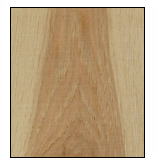
Hickory
The hickories are an important group within the Eastern hardwood forests. Botanically they are split into two groups; the true hickories, and the pecan hickories (fruit bearing). The wood is virtually the same for both and is usually sold together. There is also a special grade called "calico hickory" that guarantees heartwood and sapwood to both faces of each piece.
Andrew Jackson, seventh president of the U.S., was nicknamed "Old Hickory" because of his toughness during disputes.
Characteristics:
Hickory is the hardest, heaviest and strongest American wood. The sapwood of hickory is white, tinged with inconspicuous fine brown lines while the heartwood is pale to reddish brown. Both are coarse-textured and the grain is fine, usually straight but can be wavy or irregular. shaggy bark. Prefers well-drained soils, will grow in wet or dry areas.
Common Uses:
Tool handles, furniture, cabinetry, flooring, paneling, wooden ladders, dowels and sporting goods.
Working Properties:
The heaviest of American hardwoods, the hickories can be difficult to machine and glue, and are very hard to work with hand tools, so care is needed. They hold nails and screws well, but there is a tendency to split so pre-boring is advised. The wood can be sanded to a good finish. The grain pattern welcomes a full range of medium-to-dark finishes and bleaching treatments. It can be difficult to dry and has high shrinkage.
Common Name:
Hickory (Shagbark), Mockernut hickory, White hickory, Hickory Mockernut.
Tree is Native To:
Grows in the northeastern United States to southwest Mexico.
Botanical Classification:
Carya ovata
Family:
Juglandaceae
Average Dried Weight:
50 lb/ft.
Average Specific Gravity:
.70
Color:
Heartwood light reddish-brown, sapwood white.
Density:
Quite hard and only moderately heavy.
Texture:
Coarse.
Grain:
Fine
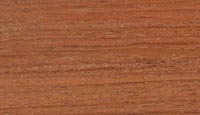
Jatoba
Scientific Name:Hymenaea courbaril
Other Names and Species:Algarrobo Cuapinol Guapinol Jatahy Kawanari Paquio Rode Locus West Indian Locust.
Origin:From southern Mexico, throughout Central America and the West Indies, to northern Brazil, Bolivia, and Peru.
Appearance:While the sapwood of jatoba is gray-white, the heartwood tends to a salmon-red to orange-brown color when fresh, becoming russet or reddish brown with dark streaks when seasoned. With its inherent beauty, rich coloring, and extreme hardness, this species is understandably one of our most popular exotic woods.
Properties:In addition to its warm reddish tint, this moderately lustrous wood is notable for its hardness and durability — jatoba is extremely dense wood and very strong. Jatoba is one of the hardest choices for wood flooring. It is roughly eighty-one percent harder than red oak, seventy-eight percent harder than ash, about sixty-two percent harder than hard maple, close to twenty-three percent harder than jarrah, and is just over six percent harder than santos mahogany's ranking of 2200.
Workability:In view of its high density and interlocked grain, Brazilian cherry is difficult to saw and plane; however, it sands nicely to a smooth surface. Due to its hardness, nailing may require pre-drilling and adjustment of the angle of penetration.
Principal Uses:Brazilian cherry (jatoba) is frequently used where good shock resistance is needed, such as in wood flooring and tool handles. Other applications include railroad crossties, wheel rims, gear cogs, and other specialty items, as well as furniture and cabinet work.
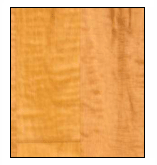
Maple - Hard
The hard maple is the state tree of Wisconsin, Vermont, New York and West Virginia. In the North, during the cold nights and warm days of late winter, the sugar maple is tapped for its sucrose-containing sap, the source of maple syrup. It may take up to 30 gallons of sap to make one gallon of syrup. Early American settlers used maple ashes to make soap and Native Americans crafted their spears from hard maple. Until the turn of the century, the heels of women's shoes were made from maple. Maple has been a favorite of American furniture makers since early Colonial days.
Characteristics:
Grows best in fertile well-drained soils. Maple sugar manufactured from sap. The wood is hard and heavy with good strength properties, in particular its high resistance to abrasion and wear. Odorless and tasteless, close-pored, very fine texture and grain, does not require filling, annual growth visible.
Common Uses:
Flooring, moulding, furniture, paneling, ballroom and gymnasium floors, kitchen cabinets, worktops, table tops, butchers blocks, toys, kitchenware and millwork: stairs, handrails, mouldings, and doors.
Working Properties:
Hard maple dries slowly with high shrinkage, so it can be susceptible to movement in performance. Pre-boring is recommended when nailing and screwing. With care it machines well, turns well, glues satisfactorily, and can be stained to an outstanding finish. Polishes well and is suitable for enamel finishes and brown tones.
Common Name:
Sugar Maple, Black Maple, Hard Maple, Maple, Rock Maple, White Maple.
Tree is Native To:
New England, Great Lakes states and Eastern Canada.
Botanical Classification:
Acer saccharum
Family:
Acer saccharum and Acer nigrum of the Family Aceraceae.
Average Dried Weight:
Seasoned: 45 pounds per cubic foot.
Average Specific Gravity:
0.56
Color:
The heartwood is very light brown or tan, sometimes with darker mineral streaks, sapwood is white or off-white.
Density:
Medium.
Texture:
Very fine.
Grain:
Normally close-grained.
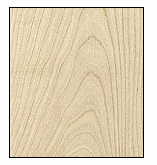
Maple - Soft
Woodworkers often request Soft Maple as a lower cost alternative to the very popular Hard Maple. The furniture industry consumes large quantities of Soft Maple as a secondary wood. Odorless and tasteless, this specie is suitable for food containers.
Characteristics:
Soft Maple is a domestic hardwood. This wood resembles Hard Maple. It is close grained but it is much softer in texture. The sapwood color is creamy white and the heartwood is light reddish-brown.
Common Uses:
This lumber is used for flooring - moulding - furniture - interior joinery - turnery - decorative veneers - musical instruments and as an alternative to Hard Maple.
Working Properties:
Soft Maple works readily with hand and power tools and can be glued satisfactorily. It has a moderate blunting effect on cutters. This wood may be stained and polished to an excellent finish.
Common Name:
Soft Maple.
Tree is Native To:
Soft Maple grows throughout most states east of the Rocky Mountains. The largest quantity is found in the New England states and the states along the Great Lakes region. The two trees that produce the most Soft Maple are the Red Maple and the Silver Maple. Red Maple is the sate tree of Rhode Island. Soft Maple also grows in Southern Canada.
Botanical Classification:
Acer saccharinum, rubrum
Family:
Acceraceae
Average Dried Weight:
35 lb/ft.
Average Specific Gravity:
.54
Color:
The Heartwood color varies from pale tan to reddish-gray, sometimes streaked, Sapwood is white to off-white.
Density:
Medium.
Texture:
Fine.
Grain:
Closed grain.
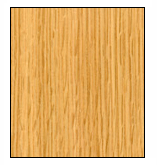
Red Oak
The Latin name for oak, Quercus, means "a fine tree." The oaks have been key in America's industrial transformation: railroad ties, wheels, plows, looms, barrels and, of course, furniture and floors.
Characteristics:
Grows best in fertile well-drained soils. Strong wood, similar to white oak but more porous. Easily turned, bendable, shock resistant. Northern Red Oak is a domestic hardwood. This wood has straight grain and a coarse texture. The color is a similar pale yellowish-brown as compared to White Oaks but with a pinkish-red hue.
Common Uses:
Flooring - moulding - furniture - interior joinery - decorative veneers and plywood.
Working Properties:
The wood dries slowly. Care is recommended in drying or degrade is possible. The wood has medium movement in service. Red oak is a dense, hard wood with a very good steam-bending classification. It has medium bending strength and stiffness, with high shock resistance and crushing strength. It can have moderate blunting effect on cutting surfaces. Experts recommend keeping cutting surfaces sharpened. Preboring is recommended. The wood finishes well, but because of its open pores, wood should be filled prior to finishing or painting. Red oak is not considered durable. Preservative treatment is highly recommended if wood is used for exterior applications.
Common Name:
Red oak, American red oak, Canadian red oak, Gray oak, Northern red oak, Southern red oak, Spanish oak, Swamp oak, Red oak, Cherry bark oak, Shumard red oak, Southern red oak, Pin oak.
Tree is Native To:
This tree grows in the mid-eastern part of southern Canada and the eastern section of the United States. It grows as far south as Alabama and Arkansas. It is the state tree of New Jersey.
Botanical Classification:
Quercus rubra.
Family:
Fagaceae.
Average Dried Weight:
48 pounds per cubic foot.
Average Specific Gravity:
.77
Color:
The sapwood of red oak is white to light brown and the heartwood is a pinkish reddish brown.
Density:
Hard.
Texture:
Coarse.
Grain:
Straight.
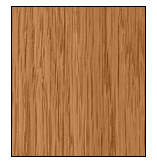
White Oak
White oak is impervious to liquids, and has been used extensively for ship timbers, barrels and casks. White oak is the state tree of Connecticut, Illinois and Maryland.
Characteristics:
White Oak is a domestic hardwood. This wood is hard, tough and straight grained. The heartwood is grayish brown and the sapwood is nearly white. White Oak figures are more attractive than Red Oak figures and the wood is more durable.
Common Uses:
Flooring - furniture - boat building - interior joinery - wagon bottoms - thresholds and decorative veneers.
Working Properties:
White Oak takes nails and screws well if pilot holes are drilled. The wood glues satisfactorily and takes stains and polishes well. With sharp tools it works well. White Oak is an excellent steam bending wood. (Use only stainless steel fasteners).
Common Name:
White Oak.
Tree is Native To:White Oak grows in the eastern part of Canada and the Unites States, south to Florida and the Gulf states. It is the state tree of Maryland and Connecticut.
Botanical Classification:
Quercus alba.
Family:
Fagaceae.
Average Dried Weight:
.47 lb/ft.
Average Specific Gravity:
.76
Color:
The sapwood is light-colored and the heartwood is light to dark brown.
Density:
Heavy, moderately strong and certainly has potential for bending.
Texture:
Medium to coarse.
Grain:
Straight.
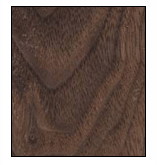
Walnut
The roots of the walnut tree release a toxic material which may kill other plants growing above them. From the time of ancient Greeks until well into modern European history, walnuts symbolized fertility and were strewn at weddings. Just the opposite, in Romania, brides who wished to delay childbearing placed into the bodice of their wedding dresses one walnut for each year they hoped to wait.
Characteristics:
Black Walnut is a domestic hardwood. The heartwood is a rich purplish-brown shade to a chocolate-brown tint. The narrow sapwood is nearly white. The texture is moderately coarse but uniform. This wood is strong and stable.
Common Uses:
Black Walnut is the foremost wood for cabinet work. It is best for gun stocks - veneers - turnery - joinery - musical instruments - plaques - carving and doors. Furniture, cabinets, architectural millwork, doors, flooring, paneling, and gun stocks. A favored wood for using in contrast with lighter-colored species.
Working Properties:
Black Walnut works with ease in all hand tool and machine tool processes. It sands to an excellent surface and worked edges remain sharp. Pre-bore with nails and screws. This wood finishes to a velvety sheen. Glues adhere well and the wood stains uniformly.
Common Name:
American black walnut, Black walnut, Walnut, Virginia walnut, Canaletto, Black hickory nut, Canadian walnut, Walnut tree.
Tree is Native To:
Black Walnut grows from Massachusetts to Southern Ontario and Nebraska, throughout the eastern half of the United States.
Botanical Classification:
Juglans nigra.
Family:
Juglandaceae.
Average Dried Weight:
40 lb/ft.
Average Specific Gravity:
.53
Color:
The sapwood of walnut is creamy white, while the heartwood is light brown to dark chocolate brown, occasionally with a purplish cast and darker streaks.
Density:
Tough and Hard.
Texture:
Coarse.
Grain:
The wood is generally straight-grained, but sometimes with wavy or curly grain that produces an attractive and decorative figure.